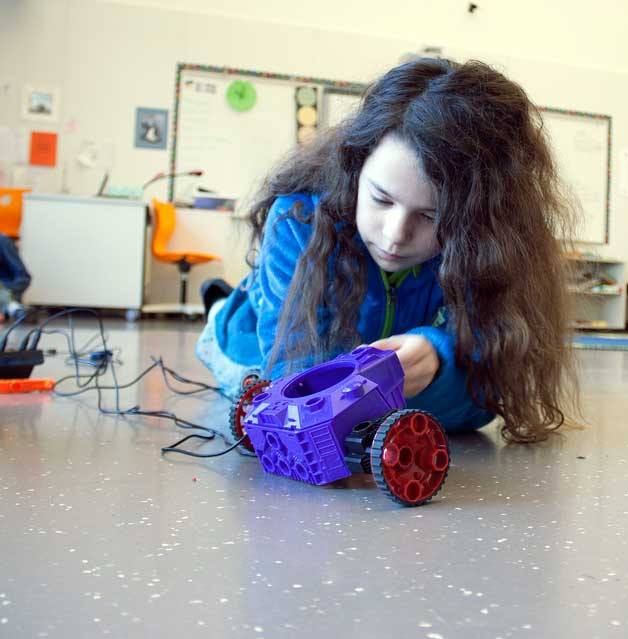 When Morgan Soltes grows up, she wants to be an entomologist. But on Tuesday, she had the chance to be an engineer along with the rest of her third-grade class.
When Morgan Soltes grows up, she wants to be an entomologist. But on Tuesday, she had the chance to be an engineer along with the rest of her third-grade class.
With the help of an educator from the Museum of Flight in Seattle, some Captain Charles Wilkes Elementary School students created robots to explore science and technology in a new way during a “Robot Garage” program.
“It’s very interesting. I just like robotics. It’s my favorite thing,” said 9-year-old Morgan. “I think it’s important [to learn robotics] so we get transportation, robot friends and ways to store knowledge.”
In groups, students built small robots made to store and move tiny objects with the assistance of the Museum of Flight educator Tedrick Mealy, who held three sessions throughout the day to train students on building and using robots.
Mealy taught a small history lesson on robots and then gave the students goals to accomplish by the end of their robotics building, including moving forward, left, right. The final robots had to store items along with picking up small objects.
“It’s mainly experimental and tinkering,” he said of the sessions. “It’s definitely nice to get hands on with this stuff.”
After getting their robotics kits — including wheels, a control system and other pieces — students took to their hands and knees on the ground to figure out how to smoothly build and operate an effective robot.
Teacher Tamra Hauge moved about the room, amazed by her students’ ingenuity when it came to building something as complex as a robotics system.
“STEM is just so big in the school district. I can see this directly relates to the STEM mission,” she said. “I think it gives them an opportunity to feel like engineers in a real-life situation.”
Through trial-and-error, students tested robots, removing and adding pieces as necessary for the better part of an hour. By the end, Mealy hosted a competition to see which robot fared best in picking up and storing objects.
“It’s fun because you get to build with different pieces and stuff,” said Owen Williams, 8. “I’ve never built a robot. It’s fun because you’re building with friends. You can build pretty much any kind of robot you want if you have enough pieces.”
Few students expressed frustration as they freely built and maneuvered their robots on the tiled floor. If they couldn’t figure out a particular movement, the Museum of Flight educator stood nearby to assist. Some even peeked at their neighbors’ work as the robots assemblies progressed.
“There’s no one way to do this,” Mealy told the students.
After visiting dozens of schools across the states, Mealy said he’s always impressed with the robots students can create. There’s usually one robot made that he’s never seen created before.
“You just give them the smallest idea and they’ll run away with something,” he said.
From start to finish, the students engaged and worked together using fast and slow motors to get their robots into tip-top zooming ability.
“They’re totally problem-solving,” Hauge said. “This is amazing on so many levels. They’re little engineers for all sorts of tests.”


